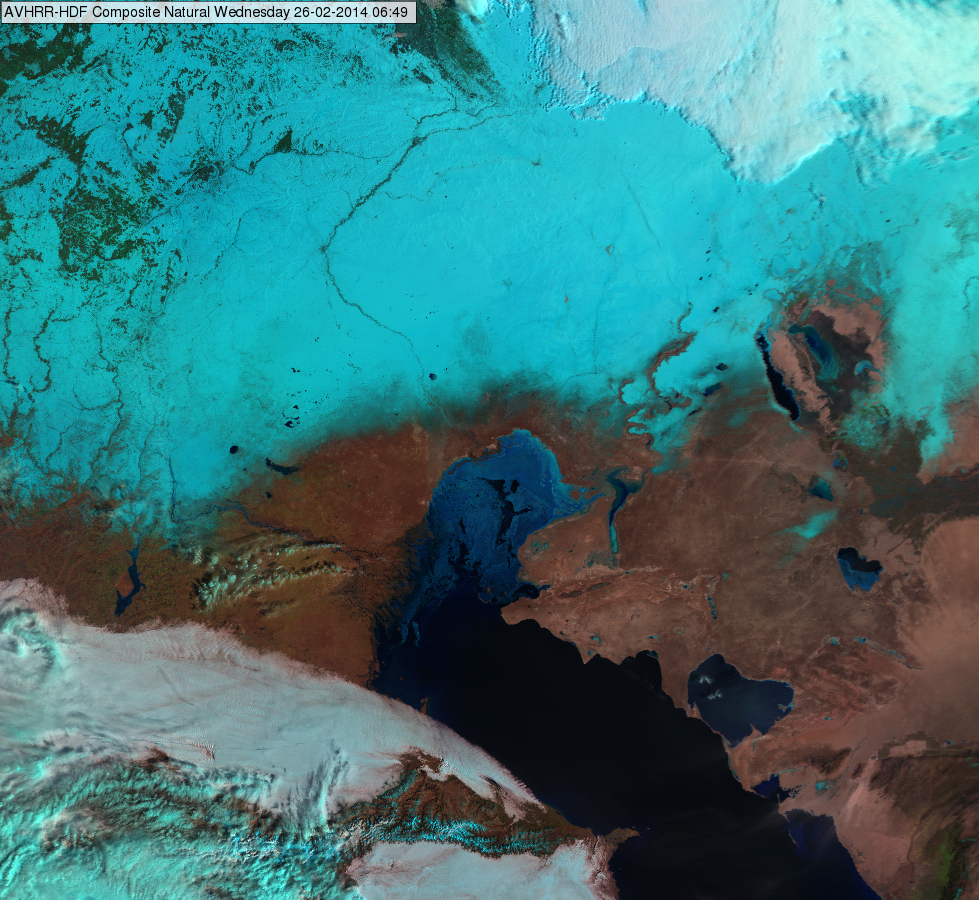Sea Ice
In the Natural Colour RGB the open water areas (not covered by ice) is black or very dark blue, while the sea ice is cyan, deep cyan or pale blue. AVHRR channels 1 (0.63 micron) and 2 (0.87 micron) contribute much more than channel 3A (1.6 micron) to the satellite measured radiation since the latter is strongly absorbed by ice crystals.
The sea ice is usually darker and/or more bluish than snow, especially when it is thin and in stage of melting, defrosting. Sea ice reflects less in the visible (0.63 and 0.87) bands than fresh snow. This may have several reasons, like the irregular shape, the presence of open water areas (black), the age of the ice etc. It depends also on the viewing angles.
The image below shows the MetOp AVHRR natural colour composite from Wednesday 26 February 2014 at 06:49 UTC.

MetOp AVHRR natural colour composite ,26 February 2014 at 06:49 UTC
The Caspian Sea isn’t really a sea, but a giant salt water lake. In the winter, ice often forms over the lake’s northernmost reaches, while the central and southern parts remain ice free. Ice forms not only due to the higher latitude. The northern part is much shallower, around 10 meter or less, while the middle and southern parts are several hundred meters deep. Furthermore the water is saltiest in the south and freshest in the north, due to the fact that most of the rivers feeding the giant lake with fresh water enter from the north or west. The freezing point of the salty water is lower.
Explanation of the cyan colour of sea ice in the Natural Colour RGB (see the recipe):
With a strong contribution of the green and the blue colour beam over sea ice, the resulting colour is cyan.

